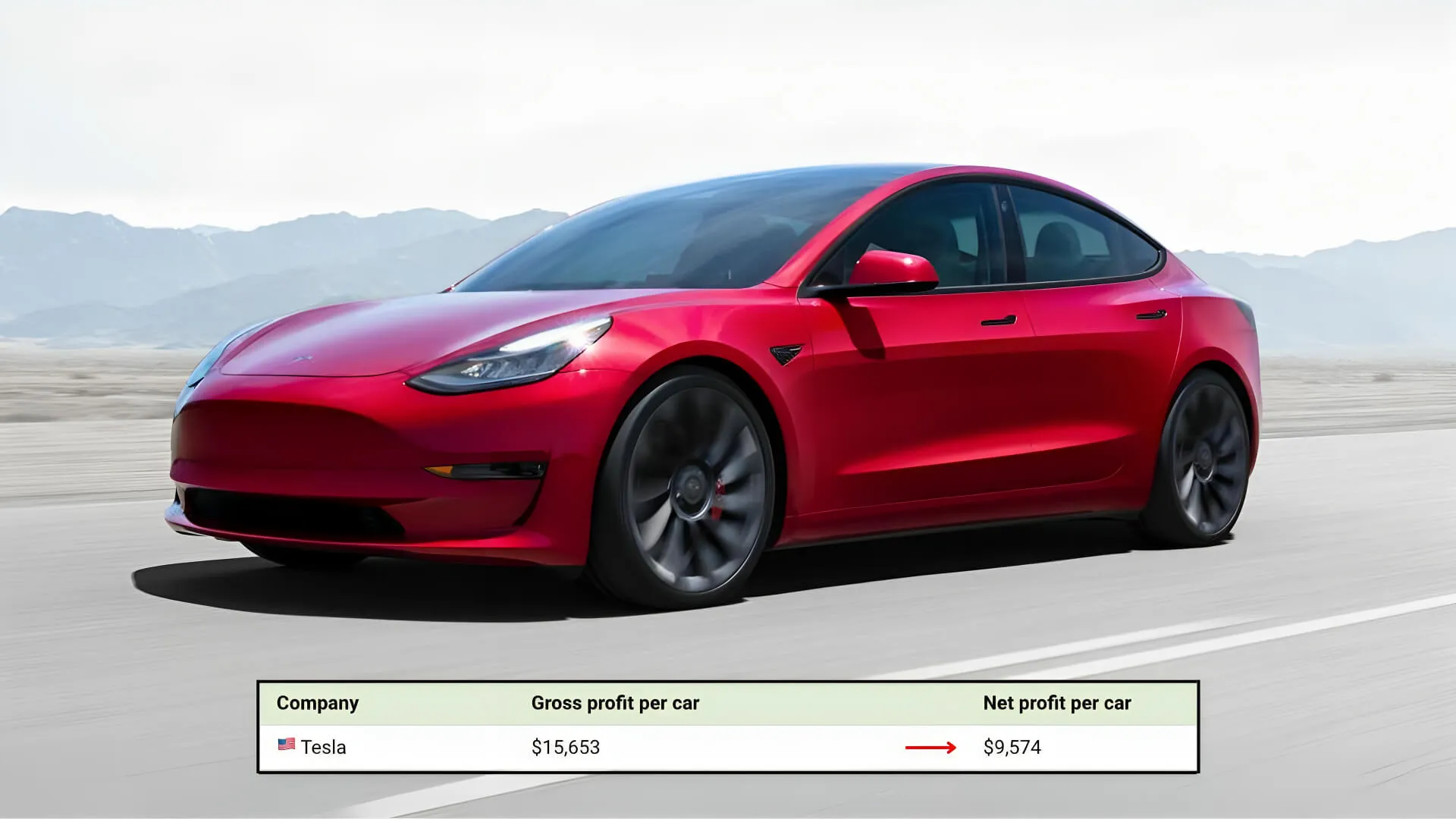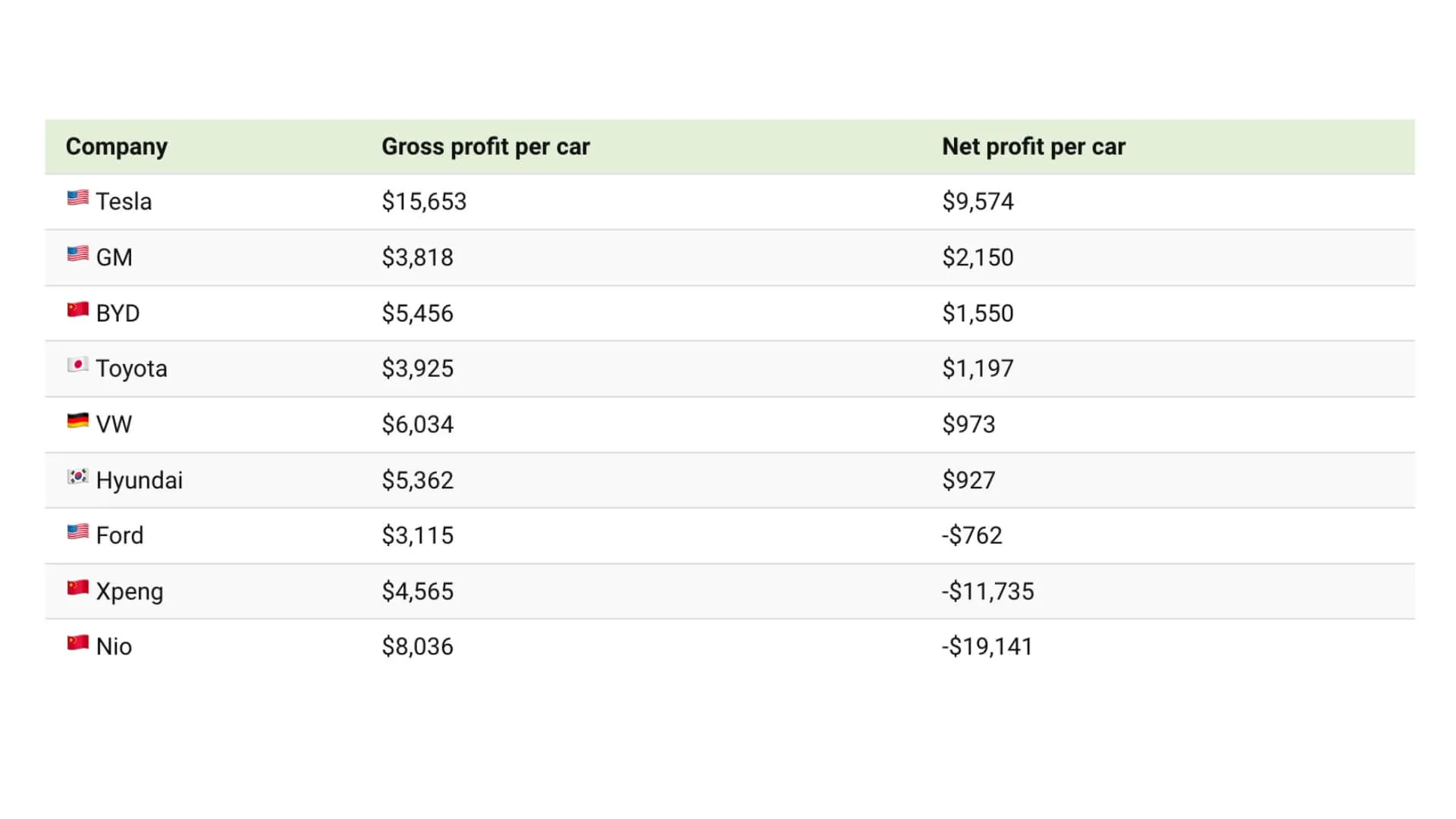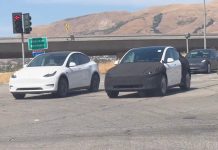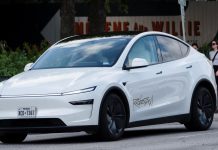Tesla, the American electric vehicle and most favored car brand has emerged as the uncontested leader in the realm of electric vehicles, commanding a remarkable 70% market share in the United States.
This journey from an ambitious startup to a market dominator has seen Tesla’s market capitalization soar beyond $1 trillion, eclipsing the combined value of traditional automotive giants like Toyota, Volkswagen, Daimler, General Motors, and Ford.

Table of Contents
Tesla Profit Margin 2023
A key driver of Tesla’s success is its exceptional profit margins, which are significantly higher than those of its competitors and the broader auto industry.
As of September 30, 2023, Tesla reported a net profit margin of 11.21% and a gross profit margin of 17.89%. Remarkably, Tesla’s net profit margin per car stands at $9,574, far exceeding that of competitors like General Motors, which is at $2,150 per car.
Factors Behind High-Profit Margins
Tesla’s extraordinary profit margins are a hallmark of its business success. Several strategic factors contribute to these impressive margins:
Innovative Technology and Efficient Production
At the core of Tesla’s success is its commitment to cutting-edge technology and production efficiency. Tesla has achieved significant economies of scale, especially in battery production.
Its strategic investments in Gigafactories have been pivotal in reducing battery costs, one of the most expensive components of EVs. The company’s focus on automation and innovative manufacturing processes has further streamlined production, reducing labor costs and increasing output efficiency.
Loyal Customer Base and Premium Pricing
Tesla has cultivated a strong and loyal customer base, attracted by the brand’s innovative features, superior performance, and sleek design. The brand’s customer loyalty allows Tesla to maintain premium pricing for its vehicles, as consumers are willing to pay more for the perceived value and quality associated with the brand. Brand loyalty also translates into lower customer acquisition costs, as word-of-mouth and brand reputation drive sales more than traditional advertising.
Low Marketing Costs and Diversified Revenue Streams
Unlike traditional automakers, Tesla spends relatively little on marketing and advertising. Much of Tesla’s marketing is organic, driven by media coverage, word-of-mouth, and Elon Musk’s high-profile presence on social media. This approach significantly reduces the cost of customer acquisition. Furthermore, Tesla’s diversified revenue streams contribute to its profitability.
Beyond car sales, Tesla generates revenue from its Full Self-Driving package, Supercharger network, solar and energy storage products, and the sale of regulatory credits. These diversified revenue streams provide a robust financial cushion and reduce dependency on a single source of income.
Vertical Integration
Tesla’s vertical integration strategy is a significant factor in its high margins. By controlling much of its supply chain and production process, Tesla reduces reliance on external suppliers, mitigating risks associated with supply chain disruptions. This control over the supply chain from raw materials to the finished product allows for cost savings and quicker adaptation to changes in market demand or technology.
Software and Technology Upgrades
A unique aspect of Tesla’s business model is its focus on software and technology. Tesla vehicles are equipped with advanced software that can be updated over-the-air (OTA). This capability allows Tesla to continuously improve its vehicles post-sale, adding features and improving performance without the need for physical modifications. This approach not only enhances customer satisfaction but also opens up new revenue streams through software updates and subscriptions.
Operational Efficiency and Innovations
Tesla’s operational strategies are marked by continuous innovations. From rethinking the car dealership model to implementing advanced data analytics for optimizing manufacturing and logistics, Tesla’s operational efficiency plays a crucial role in maintaining high-profit margins. The company’s ability to rapidly innovate and deploy new technologies gives it a competitive edge in reducing production costs and improving product quality.
Global Sales and Market Expansion
Tesla’s global reach and expansion into new markets also contribute to its high profits. By tapping into various international markets, Tesla diversifies its revenue base, mitigating risks associated with economic downturns in any single region.
Global sales also enable Tesla to achieve larger production volumes, further driving down costs through economies of scale. For example, the sales of Tesla’s cars in Australia saw a whopping 307% rise in August 2023 from last year.
Regulatory Credit Sales
Tesla has also benefited financially from the sale of regulatory credits to other automakers. These credits are earned by producing zero-emission vehicles and can be sold to other manufacturers who need them to comply with emissions regulations. This has been a significant source of revenue for Tesla, boosting its profitability.
Sustainable and Eco-Friendly Image
Tesla’s brand image as a leader in sustainable and eco-friendly transportation resonates strongly with a growing segment of environmentally conscious consumers. This image not only attracts customers but also aligns with global trends towards sustainability, positioning Tesla favorably in the market.
Challenges and Risks
Tesla’s worldwide revenue was reported at $81.5 billion in 2022. Tesla’s ambitious growth strategy targets approximately 50% annual growth in deliveries, a testament to its commitment to maintaining its leadership position in the EV industry.
Despite its impressive achievements, Tesla faces several challenges. The intensifying competition in the EV market, regulatory uncertainties, supply chain disruptions, and maintaining high margins in lower-priced segments and emerging markets are notable hurdles. Additionally, the company needs to navigate customer reactions to price cuts and changes in the competitive landscape.

Tesla Business Model
Unlike traditional automakers, Tesla’s success is not solely defined by car sales. The company has pioneered a holistic business model encompassing direct sales, servicing, and an extensive charging infrastructure.
As of now Tesla and BYD are the only two competition brands that are doing close to profitable sales in the EV Arena rest all the other brands are just going through the trial phase.
This innovative approach showcases Tesla not just as an automobile manufacturer but as a comprehensive provider of sustainable mobility solutions. The evolution from crafting luxury vehicles for the elite to producing affordable EVs for the masses underscores Tesla’s commitment to widespread sustainable transportation.
Tesla Cybertruck Earnings Call
Tesla Cybertruck represents a significant leap in innovation and design. However, this innovation comes with its challenges. Elon Musk, during Tesla’s third-quarter earnings call, acknowledged the difficulties in scaling Cybertruck production due to its unique design, remarking, “We dug our own grave with Cybertruck.”
Despite these challenges, Tesla has ambitious production goals, aiming to produce more than 125,000 Cybertrucks annually, with a target of 250,000 trucks by 2025. Built-in July 2019, the Cybertruck is expected to be priced at around $69,000, a competitive rate in comparison to rivals like the R1T at $73,000, and the F-150 Lightning at $50,000.
However, rising costs due to increased battery raw material prices are a concern for the EV industry, including Tesla.
Tesla’s Current Market Position and Future Outlook
Tesla’s journey is more than a tale of financial success, it is a narrative of innovative breakthroughs, customer loyalty, and the relentless pursuit of a cleaner, greener future on wheels. As Tesla continues to navigate the evolving automotive landscape, its innovative strategies, commitment to sustainability, and robust market position place it at the forefront of the transition to sustainable transportation.
The road ahead for Tesla is filled with both opportunities and challenges. Sustaining its high-profit margins, navigating competitive pressures, and managing production complexities, especially with innovative models like the Cybertruck, will be critical for Tesla’s continued success. The company’s role in shaping the future of the automotive industry is undeniable, and its strategies and decisions will likely have far-reaching impacts on the global shift towards electric vehicles and clean energy.
Conclusion
Tesla’s story is not just a success story in the EV market but a testament to the power of vision, innovation, and perseverance. By the end of 2022, Tesla’s share in the market reached $1.5 trillion and it would be more exciting to note the rise in the number as this year sets dawns. As the world increasingly embraces sustainable transportation, Tesla’s influence and leadership will continue to be pivotal in shaping the future of mobility.


















